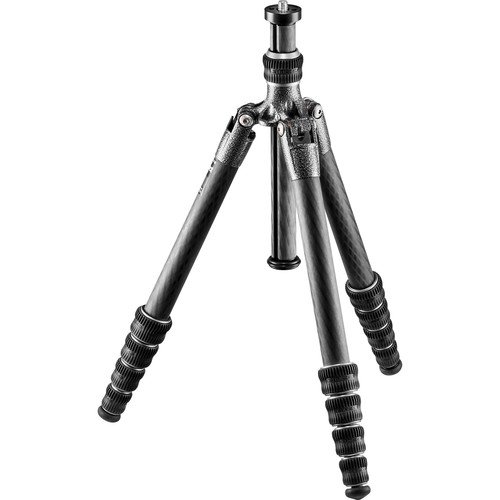The best way to avoid camera shake ruining your shots.
Gitzo Lightweight Series 1 Traveler Carbon Fiber Tripod with Center Ball Head
Regardless of your skill level there's nothing more annoying than finding yourself in a location filled with an amazing combination of elements and light to create the perfect landscape image only to end up creating a blurry image because you used a slow shutter speed and the fact that you shot it hand held. In situations like this you tripod becomes your best friend. The truth is, if you find yourself in low light or need to use a long exposure, all the best cameras and lenses in the world won't save you from a soft image. Even the most modern DSLRs with very high ISO capability will still produce some level of noise in your image if you bump the sensitivity to high. If you want the sharpest, highest quality images for shooting in low light conditions, then you will need a tripod.
Rigidity and carrying weight are going to be two of the key factors when choosing the best tripod for your needs. Your tripod should not only be able to support the weight of your camera and lens but hold it perfectly still. A flexing tripod will ruin that perfect landscape shot you countless spent hours setting up. Cheaper tripods with plastic heads and thin aluminium legs are generally too flexible to be used with anything heavier than a point and shoot or compact camera. To test your tripod's rigidity set up your tripod and press down on the top. If it flexes more than a few millimetres chances are it's probably not strong enough to support the full weight of your DSLR and lens.
“Rigidity mobility are important factors when choosing the best tripod for your needs.”
TYPES OF TRIPODS
Pocket Tripods
Specifically designed for small and compact cameras these mini tripods are perfect for table-top use or for positioning your camera for that self timer group or family photo. They are also small enough to easily fit in your jacket pocket or camera pouch. There are many types of pocket tripods, including some with extending legs, pan-tilt heads and even flexible legs. One of the most unique and versatile pocket tripod is the highly recommended Joby Gorillapod which can grasp onto just about any object or use as a tripod.
Budget Tripods
Simply put, a Budget Tripod is a cheap tripod costing less than $40. That being said there are some goods ones such as this Dolica AX620B100 62-Inch Proline Tripod, however many lack the rigidity to support a heavier camera and lens.
Travel Tripods
Travel Tripods are designed for general use where low weight and portability are key factors. Constructed of lightweight materials such as carbon fibre or aluminium, travel tripods are suitable for most types of cameras, from your basic point and shoot to your mid-range DSLR without a large telephoto lens.
Professional-Grade Tripods
Made from superior workmanship using high-tech materials such as carbon or basalt fibre, with magnesium alloy fittings a professional grade tripod offers the best rigidity and support for even the most heaviest DSLR and lens. They are however very expensive such as the Gitzo Lightweight Traveler Series 1 Carbon Fibre Tripod which costs over $900




